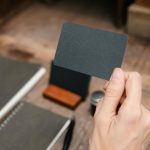Are you in need of a new desk but don’t want to break the bank? Building your own desk can be a cost-effective solution, but it’s important to budget correctly and select the right materials.
In this guide, we’ll walk you through the process of determining your desk needs and design, researching and selecting materials, calculating the total cost of materials, and the tools and equipment needed to build your desk.
Once you have all the necessary materials and tools, we’ll guide you through the building process and finishing and assembly of your desk.
By the end of this article, you’ll have a final cost analysis and a desk you can be proud of. So, whether you’re a DIY enthusiast or looking to save some money, read on to learn how much it really costs to build a desk and how you can do it on a budget.
Table of Contents
Determine Your Desk Needs and Design
Don’t stress over designing the perfect desk, just figure out what you need and let your creativity flow! Before you start building your desk, take a moment to consider what you will be using it for.
Will you be working on a computer or writing by hand? Do you need storage space or a large work surface? These are all important things to consider when determining your desk needs.
Once you have a clear idea of what you need, it’s time to start designing your desk. Take a look at different desk designs online or in furniture stores to get some inspiration. You can also draw up your own plans if you’re feeling creative.
Keep in mind that the simpler the design, the less expensive it will be to build. When designing your desk, make sure to take into account the size of your space. You don’t want to build a desk that is too big or too small for your room.
Measure the area where you plan to put your desk and make sure your design fits within those measurements. This will save you time and money in the long run.
With your needs and design in mind, you’re ready to move on to the next step: choosing your materials.
Research and Select Materials
When it comes to crafting a functional workspace, the selection of appropriate materials can make all the difference in terms of longevity and aesthetics. Before you start building your desk, take the time to research and select materials that fit your budget and design. Here is a guide to some common materials and their estimated costs.
| Material | Pros | Cons | Estimated Cost |
|---|---|---|---|
| Plywood | Affordable, easy to work with | Prone to warping, may not be as durable | $20-50 per sheet |
| Solid Wood | Durable, attractive | Expensive, requires more maintenance | $5-15 per board foot |
| MDF | Smooth surface, low cost | Heavy, not as strong as wood | $25-40 per sheet |
| Metal | Modern look, sturdy | May be difficult to work with, can be noisy | $20-30 per square foot |
| Glass | Sleek, easy to clean | Fragile, may not be practical for everyday use | $50-100 per sheet |
Keep in mind that these prices are just estimates and can vary depending on your location and the size of your desk. Consider the overall look and feel you want for your workspace and choose materials that fit within your budget. Don’t forget to factor in the cost of any additional hardware or tools you may need for assembly. With some careful planning and a little creativity, you can build a desk that not only fits your needs but also your budget.
Calculate the Total Cost of Materials
You can visualize the total expenses of your workspace by tallying up the combined costs of the materials you’ve selected for your DIY project. This can be done by taking note of the quantity and price of each material you need.
Once you’ve gathered all the information, you can calculate the total cost of your materials. To do so, you can use a simple formula: multiply the quantity of each material by its price, and then add up the results for all the materials. It’s important to include the cost of any additional items, such as screws or glue, in your calculation. This will give you an accurate estimate of the total cost of materials for your DIY desk.
Keep in mind that the total cost of materials can vary depending on the quality and type of materials you choose. It’s important to choose materials that fit your budget and needs. By calculating the total cost of materials, you can create a budget and avoid any unexpected costs. This will ensure that you have a successful DIY project without breaking the bank.
Tools and Equipment Needed
To create your DIY desk, you’ll need a variety of tools and equipment that can be easily found at your local hardware store. Some of the basic tools you’ll need include a drill, screws, screwdrivers, a saw, sandpaper, and a measuring tape. You may also need a power sander if you plan on sanding a large area or if you want to save time.
In addition to the basic tools, you may also need some specialized equipment depending on the design of your desk. For example, if you plan on building a desk with drawers, you’ll need drawer slides and a router to create the recessed areas where the slides will be attached. If you plan on creating a desk with a hutch, you’ll need a circular saw or jigsaw to cut the pieces to size.
When selecting tools and equipment for your DIY desk project, it’s important to consider the quality of the materials you’ll be using. While it can be tempting to opt for cheaper tools, investing in high-quality equipment will ensure that your desk is sturdy and will last for years to come. Take a look at the table below for a list of recommended tools and equipment and their estimated costs.
| Tool/Equipment | Estimated Cost |
|---|---|
| Drill | $30-$150 |
| Screws | $5-$20 |
| Screwdrivers | $5-$20 |
| Saw | $30-$150 |
| Sandpaper | $5-$10 |
| Measuring tape | $5-$15 |
| Power sander | $50-$200 |
| Drawer slides | $10-$20 |
| Router | $50-$200 |
| Circular saw/jigsaw | $50-$200 |
Building Process
Now that you’ve got all the necessary tools and equipment, it’s time to start building your DIY desk.
First, measure and cut your materials. If you’re using plywood, measure and mark the dimensions you need for your desk top, legs, and any other components. Use a circular saw or jigsaw to cut the pieces out.
Next, assemble the desk. Start by attaching the legs to the desk top. You can use wood glue and screws to attach the legs to the underside of the desk top. Make sure the legs are straight and secure. Then, attach any additional components, such as drawers or shelves, using screws and wood glue.
Sand and finish the desk. Sand the surfaces using a fine grit sandpaper until they are smooth to the touch. Then, apply a finish of your choice, such as paint or stain, to protect the wood and give it a polished look.
Allow the finish to dry completely before using your new desk. With these steps, you can build a desk that is both functional and stylish while staying within your budget.
Finishing and Assembly
After cutting and assembling the components, it’s time to add the finishing touches to your DIY desk. This is where you’ll turn a basic wooden structure into a functional and aesthetically pleasing piece of furniture. Here’s what you’ll need to do:
-
Sand down the entire surface of the desk with a fine-grit sandpaper to remove any rough patches or splinters. Pay special attention to the edges and corners of the desk, as these are the areas that are most likely to cause injuries.
-
Apply a coat of wood stain or paint to give your desk a polished look. Choose a color that matches the rest of your furniture or complements the color scheme of your room. Allow the first coat to dry before applying a second coat if necessary.
-
Install any hardware or accessories you need, such as drawer pulls, keyboard trays, or cable management systems. Make sure to measure and mark the positions accurately before drilling any holes.
-
Finally, assemble your desk according to the instructions provided. Check that all the components fit together snugly and securely, and make any adjustments as necessary.
Congratulations, you’ve just built your very own desk!
By following these steps, you can create a desk that’s not only functional but also personalized to your taste. Whether you prefer a rustic, natural look or a sleek, modern design, you can achieve it with the right materials and techniques.
So, roll up your sleeves and get ready to build the desk of your dreams!
Final Cost Analysis
Let’s take a quick look at how the expenses stack up for your custom DIY desk. After factoring in the cost of materials and any additional tools or equipment you may need to purchase, the final cost of building a desk can vary greatly.
However, on average, you can expect to spend anywhere from $50 to $500 to build a desk. The cost of materials is the most significant factor in determining the final cost of your DIY desk. Basic materials such as plywood and lumber will cost you around $50 to $100, while more expensive materials like hardwood can cost upwards of $500.
Keep in mind that the size and complexity of your desk will also impact the total cost of materials. In addition to the cost of materials, you may also need to factor in the cost of any special equipment or tools you may need to purchase. This can include items like sanders, saws, and drill bits.
If you don’t already have these tools on hand, you should budget an additional $50 to $100 for equipment rental or purchase. By keeping these expenses in mind and planning accordingly, you can build a custom desk that meets your needs without breaking the bank.
Conclusion
So, there you have it! Building your own desk can be a fun and rewarding project that saves you money in the long run.
By determining your desk needs and design, researching and selecting materials, calculating the total cost of materials, gathering the necessary tools and equipment, following the building process, and finishing and assembling your desk, you can create a custom piece that fits your space and style.
Remember to budget accordingly and be prepared for unexpected costs, but don’t let that discourage you from taking on this DIY project. With a little creativity and elbow grease, you can have a professional-looking desk at a fraction of the cost of buying one.
So, what’re you waiting for? Get to building!



